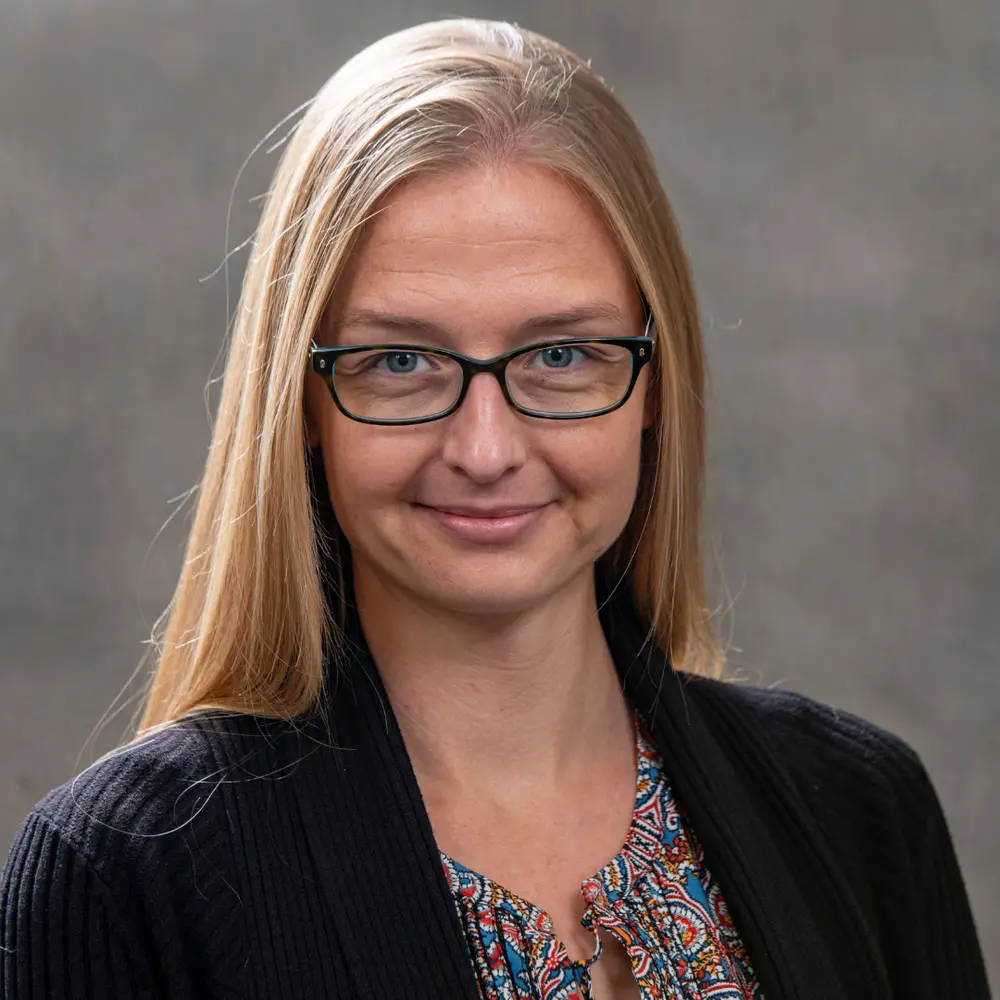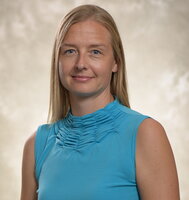
Professor Stadtmueller was one of ten new faculty hires made in the School of Molecular and Cellular Biology in the last three years. Stadtmueller is an assistant professor of biochemistry, assistant professor of Biomedical and Translational Sciences with the Carle Illinois College of Medicine, and is an affiliate of the Beckman Institute.
Tell us about your lab and your research focus, including how you came to choose or specialize in this area.
My group studies the structural and biophysical mechanisms that mediate host-microbe interactions by combining approaches including: Cryoelectron microscopy (cryoEM), X-ray crystallography, and double electron electron resonance (DEER) spectroscopy. My interest in molecular mechanisms was born while I was an undergraduate at the University of Wisconsin and fostered as a graduate student in Chris Hill’s lab at the University of Utah where I became a structural biologist. As a postdoc in Pamela Bjorkman’s Lab at Caltech, I became hooked on the immune system – I was fascinated how its rapid co-evolution with microbes had resulted in divergent protein structures across species.
Here at Illinois, my lab is investigating the structures and functional mechanisms of the predominant mucosal antibody, secretory IgA (SIgA), to get at how its unique architecture supports both pathogen clearance and commensal microbe homeostasis and how we can engineer mucosal antibody-based therapeutics to modulate these two functions. Recent progress toward this goal includes our first publication describing the cryoEM structures of SIgA and its dimeric IgA precursor (Bharathkar S.K. and Parker B.W. et al., eLife 2020). We are now using new structures to guide investigation of antibody polymerization mechanisms and to engineer functionalized SIgAs that can neutralize pathogens such as Clostridium difficile and Salmonella Enterica. Plausible long-term outcomes of our work include superior understanding of mucosal immunology and host-microbe coevolution, as well as new SIgA-based therapeutics.
What is especially exciting about this particular area of research, at this time?
The structure of SIgA had eluded scientists for over 60 years; we now have information about the structure that allows us to test new hypothesis and design new therapeutics.
What interested you the most about becoming a faculty member in the School of Molecular and Cellular Biology and the University of Illinois?
Coming to Illinois I was excited to return to a large, state institution with a broad research portfolio. There are so many different types of research going on here that it is, well, just inspirational! I have also really enjoyed working with the student population at Illinois; students at all levels of training can contribute uniquely to research and it’s been great fun working with them to build a new lab.
What are your teaching interests?
In the lab I am first and foremost a structural biologist and I love to teach people how to think about protein structure. In the classroom, I teach Immunology and I think my background in structural biology provides some unique perspective on the topic. I teach MCB 408 Immunology and I also teach immunology topics in the Carle Illinois College of Medicine.
If any students (undergrad or grad) are interested in working in your lab, what’s your advice or how can they get in touch with you?
Undergraduates should review our website, read some of our papers and then if interested in joining the lab, should email me directly. We have limited space in the lab and cannot take everyone who is interested, so I always suggest that undergraduates pursue multiple research opportunities.
Tell us about someone who made a difference in your life, such as someone who sparked your interest in biology, who encouraged you to pursue a career in academia or challenged your thinking about a topic.
I grew up on a farm where I was encouraged to explore, question and to spend a lot of time outdoors – that fostered a deep interest in biology. Since then, I have had the great privilege of many inspirational mentors - family members, teachers, scientists, musicians and even athletic coaches - who all played some part in encouraging the curiosity, motivation and determination needed for me to become an academic scientist. At some point, I came to realize just how impactful all those teachers and mentors were and thus, how powerful education can be; that led me to commit to an academic career.
What do you like to do in your free time?
This year I haven’t felt like I’ve had much free time! When I do, I am happiest outside and moving (and accompanied by my family, including my 8-year-old daughter). I love swimming outdoors, hiking, backpacking, mountain biking, skiing, playing ice hockey on frozen lakes and just being out in nature!
